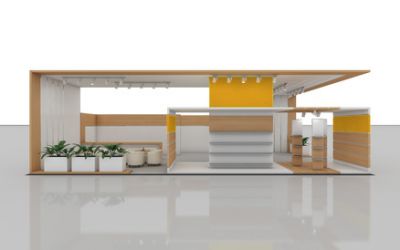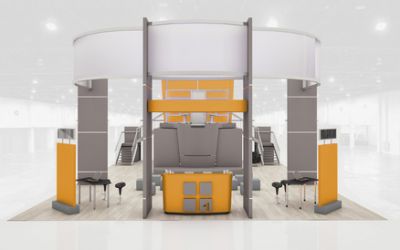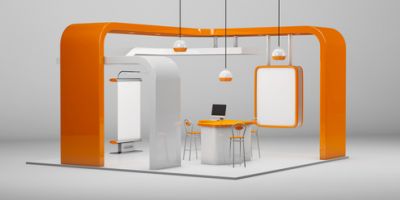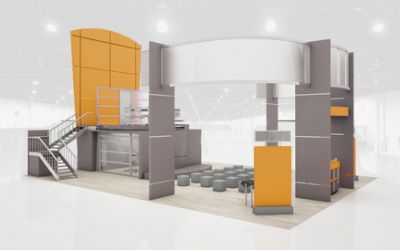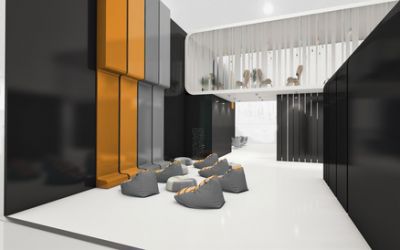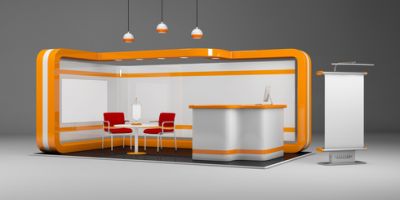- HOTLINE
- 0431 55 68 52 01
- Mo-Fr 9-16 Uhr
Stand types
1. the row stand
At this most frequently used "standard" trade fair stand, there are other neighbouring stands to the left and right of your own stand. These limitations create a closed and compact impression. The stream of visitors usually passes by the front side of this stand. Due to its arrangement in a row of other stands, however, the individual stand is often not so striking here.
2. the headstand
The front stand is accessible from three hall aisles and therefore has only one closed side - the rear. It is usually located at the beginning or end of a row of stands. Its three open sides allow great freedom of design and are also very inviting to trade fair visitors. A disadvantage here is the limited wall space, which means that marketing equipment such as banners and posters can only be used to a limited extent. Instead, additional roll-up displays, trade fair counters and illuminated columns are often used here as effective advertising media.
3. the island stand
A special feature is the island stand, which even has four open sides and offers visitors access to the stand from all sides. Such an open stand is ideal for the presentation of your own products, as it is usually placed in the centre of the trade fairs. This central location, however, regularly increases the cost of stand space. On the other hand, the island stand offers a great deal of design freedom with regard to the exhibition stand and the additional equipment. In the context of marketing and trade fair planning, it should also be noted that island stands do not have any classic wall surfaces.
4. the floor stand / double floor
This type of exhibition stand is a real highlight among the exhibition stands. As the name suggests, these stands even extend over two (or more) levels. On the one hand, this type of stand serves to increase the size of the presentation areas; on the other hand, it is the additional floor and the often impressive size and presentation that make it the focus of attention for trade fair visitors. The upper area is often used for offices or hospitality areas.
5. the passage status
The walk-through stand is a rather unusual stand type. Basically it is a row stand between two other stands, but it is open to two aisles. As a rule, it is somewhat lower and has only two side walls, but no rear wall. Visitors often cross this stand to get to the next row. This of course attracts a lot of attention, as does the stand that is open on two sides. The trade fair staff must therefore pay particular attention to passers-by who are fundamentally interested, in order to actively address them.
On the other hand, a high throughput can of course also offer good customer acquisition opportunities.
6. the corner stand
Corner stands each have two open and two closed sides. It is usually located at the end of a row of stands and often at an intersection of two aisles. The advantage of this stand type, which does not occur very frequently, is the often quite large stand area. In addition, this stand can be entered from two sides by visitors to the knife. It looks very compact and cosy at the same time. Thus, with the right design, such as multimedia elements, it achieves a quite high and inviting attention with the visitors.
